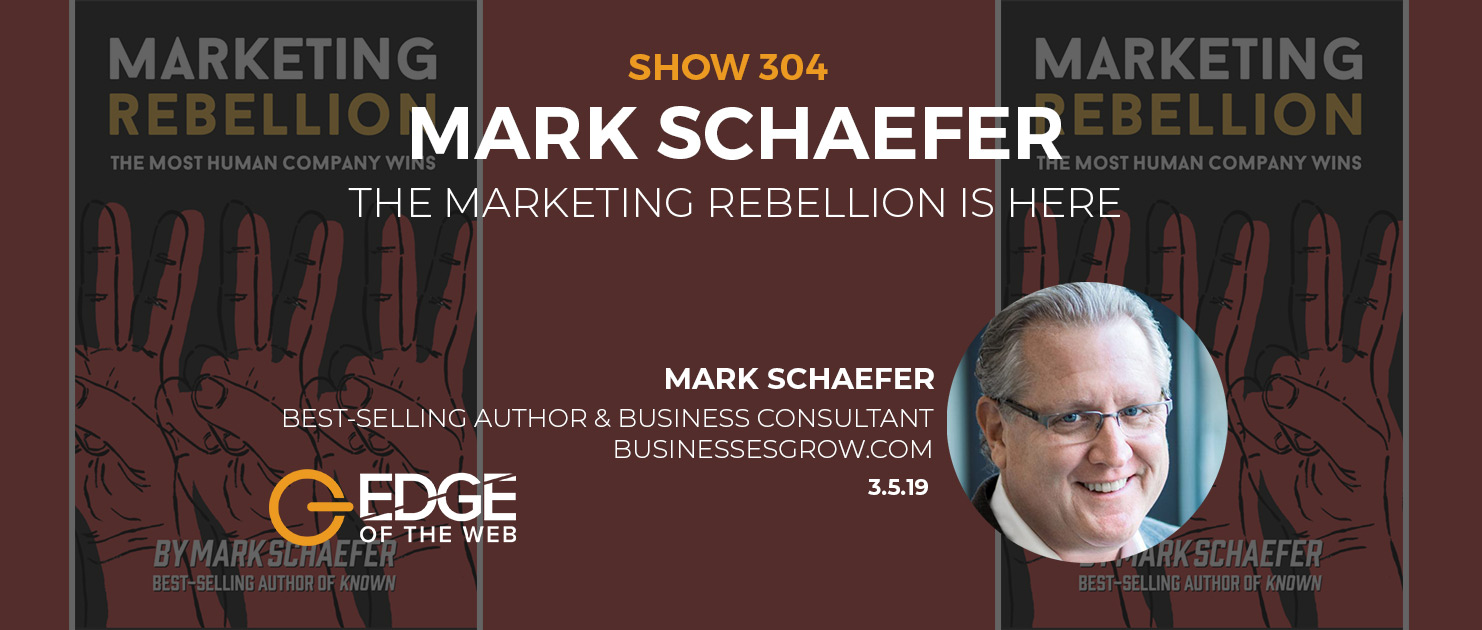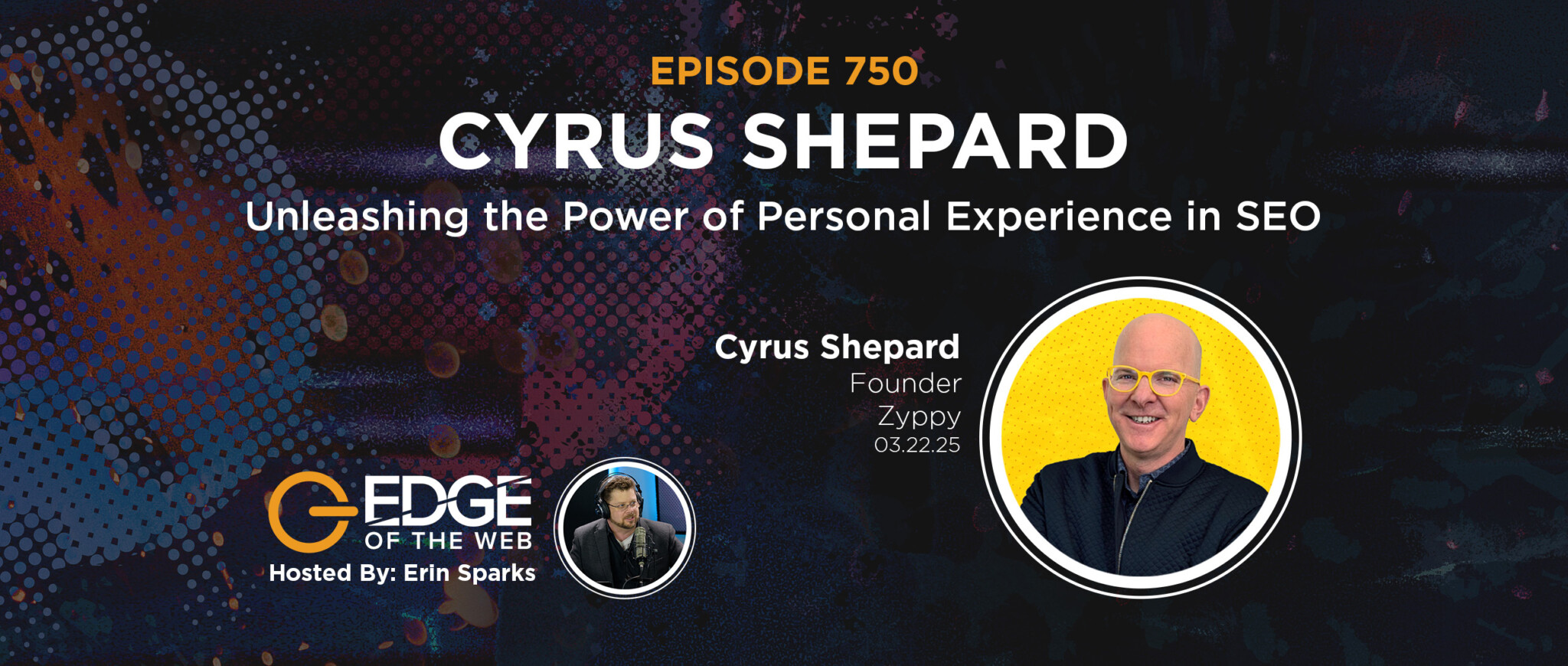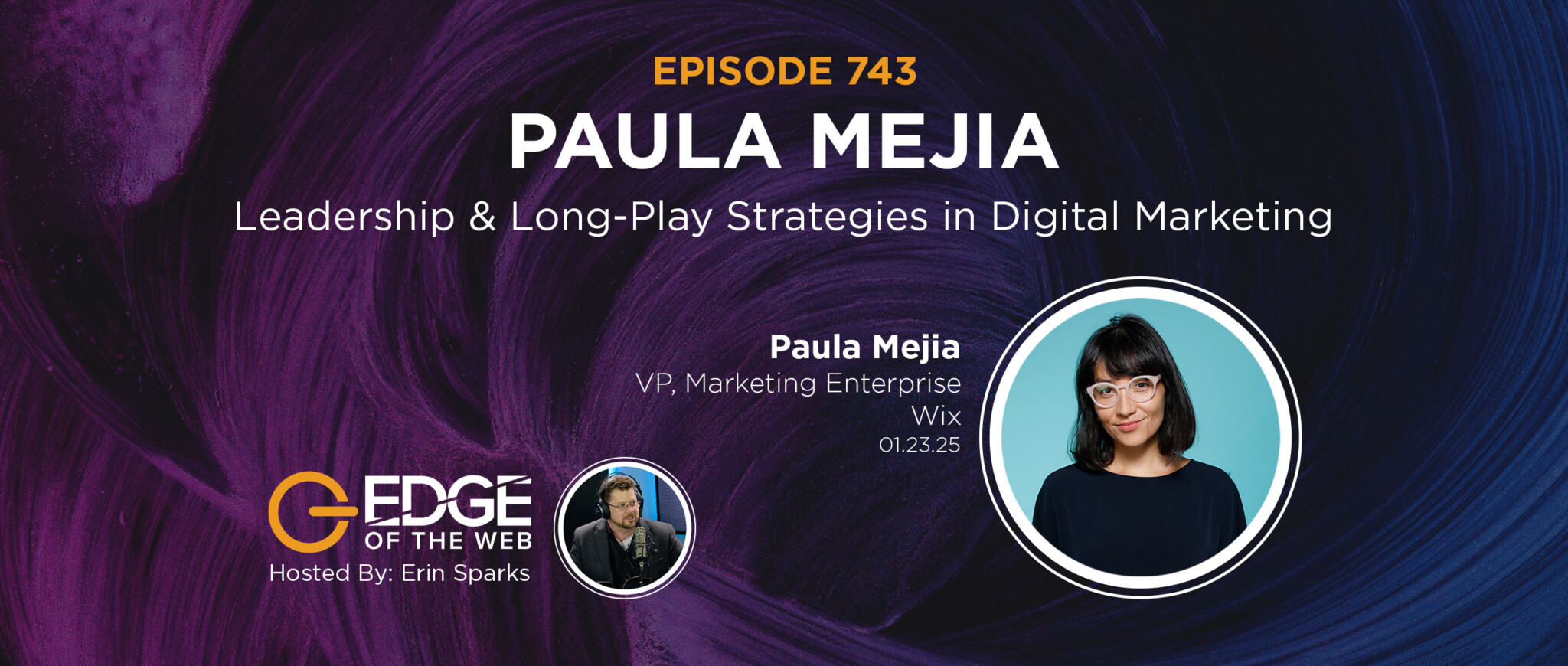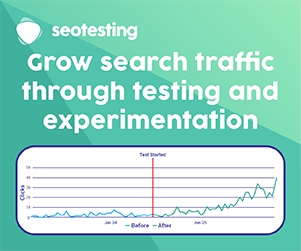The fields of marketing and advertising are constantly changing. Past strategies no longer work as technology races ahead. Customers are buying based on personal values and trust in brands is at a 10-year low. What are marketers supposed to do? Site Strategics CEO Erin Sparks and Digital Media Director Tom Brodbeck sat down with special guest Mark Schaefer in Episode 304 of the award-winning EDGE of the Web podcast to find out. Here’s what we learned:
It’s Not About the Technology – It’s About the Customer
When Mark Schaefer was consulting with companies about their marketing. He kept hearing the same refrain over and over – what they had been doing with their technologies didn’t seem to be working anymore and they were falling further and further behind. And this was holding true even with big, famous brands with million-dollar marketing budgets and premium agency relationships.
At first, Mark thought it was just because technology was racing further ahead than companies were able to keep up with. But when he dug into the research, what he found surprised him. Yes, technology was definitely moving ahead, but far more important was the fact that consumers were moving away from the brands, meaning away from the marketing.
Enabled by technology, the consumers are the ones in control. There is no sales funnel. There is no customer journey. They own it. They create it. This is the shocking news: There’s a backlash against loyalty. Something like 87% percent of customers shop around. In 90% of the industries that McKinsey studied, there was no evidence of loyalty. If you’ve been in marketing for decades and this is the first time this is really sinking in, it can be shocking. It means totally reimagining what you do and how you do it. It took Mark two full years to re-configure his own marketing efforts. His book will only cost you $19.99!
The End of Lies, Secrets and Control: Three Phases of the Marketing Rebellion
One piece of the marketing rebellion started more than 100 years ago, and still hasn’t been taken seriously by many marketers.
Consumers from the very beginning have fought back against being controlled. Advertising and marketing were sort of synonymous when it all started in the 1880s. By the late 1800s and early 1900s, advertising became a mainstream way to monetize publications. But when you look at the advertising back then, it was all about making remarkable promises, and as the competition heated up, the promises became more and more remarkable, and then crossed over into being outright lies. The consumers revolted, the government responded and they created the FTC and the FDA to make it a crime to lie to consumers.
Then along came the next big marketing rebellion, which was against secrets. Back in the 1980s marketers made money on secrets, meaning they made money on what consumers didn’t know. But with the democratization of information on the Internet, consumers now know more about the insurance, the car, the vacation or anything else they’re going to buy than the people trying to sell to them.
The third marketing rebellion that is underway right now is against control. And consumers now have the ability to take control of their exposure to marketing. You can watch a ton of TV these days on something like Netflix and never see a commercial. People can go on a long drive and listen to all kinds of radio and podcasts and never hear a commercial. You used to have to put up with the commercials to get the content you wanted, but that is no longer the case. People can block ads on nearly any social media platform or website. Consumers are taking back control and they’re rejecting ads. What marketers have to do now is find ways to engage those rebellious consumers to get their message across.
Consumer-Driven Marketing
Seth Godin says marketing is about changing people – their opinions, their behaviors, their votes, whatever – but he’s wrong. That’s a leftover view from the old way of marketing where consumers only knew what marketers told them about various products. The big shift is that today, a brand is not what you tell a person. A brand is what people tell each other. It’s not about changing people. It’s about respecting people and coming alongside them and saying, “You know, I respect your ability to make up your own mind. You have the accumulated knowledge of the human race in the palm of your hand. I think you know how to use it. What can I do to help you? What can I do to help you make money, save money, have a happier life, a healthier life, more entertaining life? How can I create something that’s authentic and interesting and relevant that you would love to share with your people?”
But do people know how to use all that information available to them to make better decisions? It’s definitely a trajectory of change that is taking place. People over 65 are still more likely to be watching traditional television, so if that’s your target market, you should be on TV. Can people trust Amazon product reviews? Not if a bunch of them are fake. But that’s going to get figured out. And artificial intelligence (AI) and machine learning are going to help resolve these issues. It won’t be long before fake reviews and other fake information simply won’t be able to get through the AI filters.
The point is that you can’t rely on tricking people any more. Companies and brands are going to win when they tell consumers they’ll never let them down, and back it up with real action. It’s about establishing real trust between companies and customers. It’s about authenticity.
Think about the companies that are taking strong stands on social and political issues. Some wonder if that is a smart business move or not. But it’s one of the ways brands can get to the customer loyalty that has been eluding them lately. The consumer is saying, “If you want my loyalty, I want to see that you are aligned with me and my views.” But this approach is not for every company. It’s just one tool of many. And a company doesn’t have to take a stand on a polarizing hot-button issue – just get out there and get involved in your community. Let people see that your company cares about what’s going on.
How Can Companies Become More Human?
One of the great pieces of wisdom in the book comes from Chris Savage, the the CEO of Wistia, which is a video hosting and production platform. He tells a story like this: “You know, we were a startup and we were trying to sell like crazy. We were talking about our product a lot and we weren’t selling a thing. Then for fun, we started to make these videos of our own people at work and showed our work environment. They went viral and people started signing up. When we were selling, we weren’t selling, but when we showed our humanity and showed ourselves, we started selling like crazy. Our culture is our marketing.” This is a powerful insight. It is a powerful path forward because the question was how do you become human? You can fake it, which is why a lot of the really big companies are struggling with this approach. They’re not used to and don’t know what to do because it involves being approachable and accessible, responsive, friendly, and even vulnerable. And you can’t do that solely through automation.
Connect with Mark Schaefer
Twitter: @markwschaefer (https://twitter.com/markwschaefer)
Facebook: https://www.facebook.com/mark.schaefer3
LinkedIn: https://www.linkedin.com/in/markwschaefer
Website: https://businessesgrow.com
Latest book: Marketing Rebellion: The Most Human Company Wins
Blog: {grow}
Press page: https://businessesgrow.com/contact/press-inquiries
Your Digital Marketing ROI
Tired of wondering if your digital marketing efforts are paying off? Stop wondering and find out how you’re really doing. EDGE sponsor Site Strategics can put together a Digital Marketing ROI Report that examines your existing SEO, content, social media, and PPC. Visit https://edgeofthewebradio.com/roi/ to get 30% off a comprehensive review of your digital assets!






















